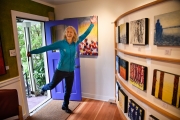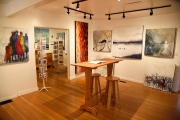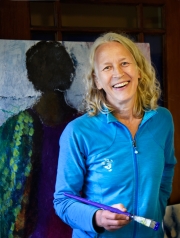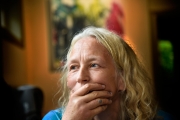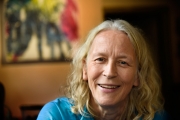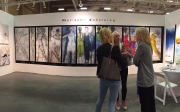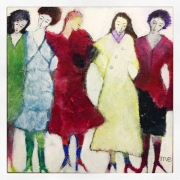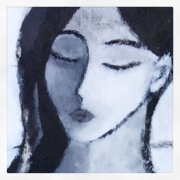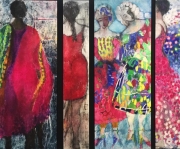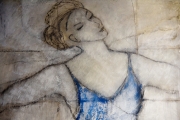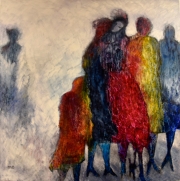Regional district staff recommend approving an amended application for groundwater extraction in Merville as a “home occupation,” but rural area directors want more clarity on its legal definition

Art Alchemy shows 250 square feet of art
Art Alchemy shows 250 square feet of art
Art Alchemy, the Comox Valley art collective born out of a desire for more places to see local art, will hang its eighth annual Square Foot Art show this weekend
This article was updated Nov. 20 to include a quote from painter Sofie Skapski
H elen Utsal came to the Comox Valley to paint. She pictured a place “riddled with artists” and wanted to become part of the cultural scene that, she assumed, would have an abundance of public places to see the art created here.
She found something quite different when she arrived. There was, in fact, an abundance of artists working in a variety of mediums. But they mostly worked in isolation from each other, at home and in small out-of-the-way studios, and they all had little visibility in the community.
“It was and still is a struggle for local artists to get their work shown,” Utsal told Decafnation. “There’s just not many places to see art.”
So Utsal began forming the idea of a Comox Valley collective of artists who would create their own gallery and studio space, and share overhead costs.
She rekindled a plan by fellow artists Lucy Schappy and Jennifer Weber to take a chance on renting a space for a studio and gallery. They found a small space in Comox, but it fell through when the physiotherapists that owned the building decided to expand their own office.
Undaunted, Utsal formed the West Coast Art Collective during the winter of 2010-2011 with other nine Comox Valley artists who shared the dream of making local art more visible. The collective staged their first exhibition — a selection of 12-inch by 12-inch canvases they called The Square Foot Show — in June of 2011 at the now-defunct Purple Onion cafe in Comox.
Two years later, Utsal, Shappy, Weber and two new artists, Stacey Wright and Guillermo Mier, found the perfect space at 10th Street in Courtenay, above United Floors. It’s bright, has high ceilings and big windows and is large enough for all nine artists to have both studio and gallery space. They named the new endeavor Art Alchemy.
The artists at Art Alchemy have changed over the years, but the goal of having a place for artists to share their creative vibe and camaraderie has remained a constant.
And so has the Square Foot Show.
The nine current artists of Art Alchemy will be joined this weekend by 38 other mostly Comox Valley artists for the eighth annual Square Foot Show. (Friday, Nov. 23 from 7 pm to 10 pm, and Saturday and Sunday, from 11 am to 5 pm.)
Art Alchemy artists: Mary Gorman,Shea Kottila, Sharon Lalonde, Larissa McLean, Nancy Randall Burger, Sofie Skapski, Helen Utsal, Nicolette Valikoski, Maggie Ziegler
It’s the first year the show has been juried and that submissions were accepted through a digital process.
“The whole purpose is to support artists and encourage them,” Utsal said.
Most serious art buyers have traditionally lived in larger cities, where cultural demands are greater.
“The Comox Valley is not a prime market,” Utsal said, noting that most local professional artists — those who support themselves through their art — sell to buyers in Vancouver, Toronto and internationally. “But that’s changing. Our population of art collectors is growing.”
Twenty-five artists have passed through the collective in its first seven years. Artists will rent space for two or three years and then move on, creating their own studios or moving from the area.
Sofie Skapski, one of the current artists at Art Alchemy, describes the experience like this: “I love our studio space here at Art Alchemy because of the openness and the wonderful light. It is important to me to work within a group because working alone in a studio can be isolating. Here we have camaraderie – we inspire each other in a supportive atmosphere but at the same time still maintain our privacy in our own personal spaces.
As the only remaining founder of the collective, Utsal has assumed the role of Art Alchemy’s principal artist, which means she takes on most of its administrative chores, like organizing the exhibitions. But it’s made easy by the “generous cooperative spirit we value and encourage.”
“Everyone pipes up, we’re all protective of the vibe,” she said.
This weekend’s Square Foot show is one of two exhibitions staged annually by Art Alchemy. They have another proprietary show in June that coincides with the Valley-wide art studio tour. And Art Alchemy artists also display their work at the Comox Valley Airport from May through October each year.
The Art Alchemy studio gallery is open to the public at 362C 10th Street in Courtenay. It’s open to the public from 11 am to 5 pm on Saturdays, or “whenever the door is open.”
On Merville groundwater extraction it’s deja vu all over again
Merville water bottling issue returns to the CVRD, highlights provincial water policies
The Comox Valley Electoral Areas Service Commission will consider on Monday an amended application for water bottling operations in Merville and draw attention to larger water policy issues in British Columbia
The Meaning of Life: Five notable Vancouver Islanders reflect on their life’s journey
Decafnation starts a new tradition this year by asking selected Comox Valley people to share their acquired knowledge that didn’t come from book-learning or academic studies. We begin today with the collective wisdom of five notable Vancouver Islanders rooted in the Comox Valley.
The Week: Give us full transparency when paid ‘volunteers’ work with CV students
Faith-based volunteers can contribute positively to the educational experience in our public schools but everyone must be perfectly clear about who they are, what they can and cannot do and school administrators must monitor their activity closely and consistently
What’s dire: the lack of Comox subdivisions or climate change and gradual deforestation?
A Comox Valley developer is suing the Town of Comox because his permits to cut down trees and build more single-family homes haven’t been issued as fast as he’s wanted and because the town wants a wider walking trail through the property
Questions raised about prayer in schools, SD71 puts hold on faith-based volunteers
Comox Valley schools have put a hold on all faith-based community volunteer activities pending a review to determine if Youth For Christ workers have been violating SD71 policies and provincial laws
The Week: Ken Grant fined by Elections BC and Parksville confronted by development, water issues
Another Comox Councillor was fined by Elections BC for violating BC elections laws, plus Parksville’s water supply is unable to meet provincial requirements for summer water flow in the Englishman River let alone provide water for a proposed 800-unit development
THE WEEK: As Puntledge River goes lower, Colorado drinking recycled wastewater
A serious fall drought has reduced flows in the Puntledge River, shutting down hydroelectric power generation for the first time in 55 years. Meanwhile, many states eye sending treated wastewater to kitchen taps
THE WEEK: Let the people have a larger voice at Comox Valley council meetings
Making it easier for citizens to speak directly to municipal councils might increase public interest in local government, which in turn might encourage more registered voters to actually cast a ballot
Courtenay Council announces its regional district line-up and other appointments
Courtenay City Council’s annual appointments announced after a short delay

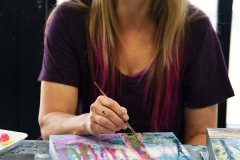

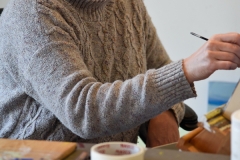
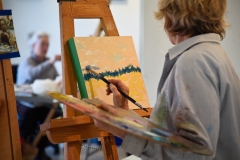
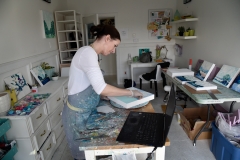

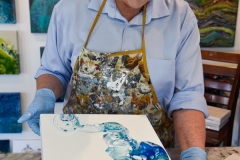
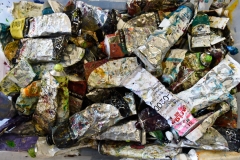




 “My mother was an artist. Her best friend was a journalist for one of the Swedish daily newspapers. She had a younger brother who was a doctor. He wanted to purchase some art, and asked his sister if she could arrange for him to see some of her friend’s work.
“My mother was an artist. Her best friend was a journalist for one of the Swedish daily newspapers. She had a younger brother who was a doctor. He wanted to purchase some art, and asked his sister if she could arrange for him to see some of her friend’s work.